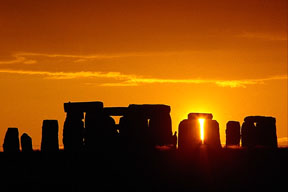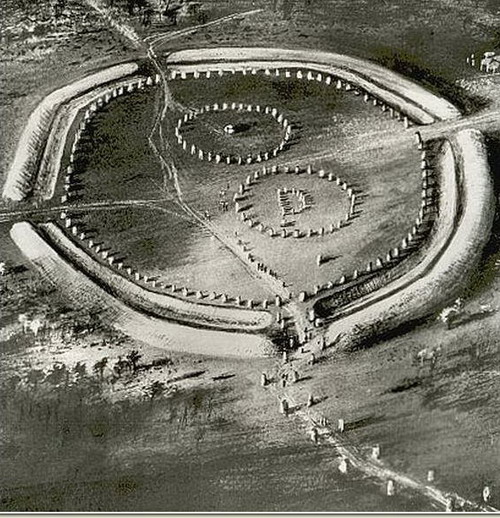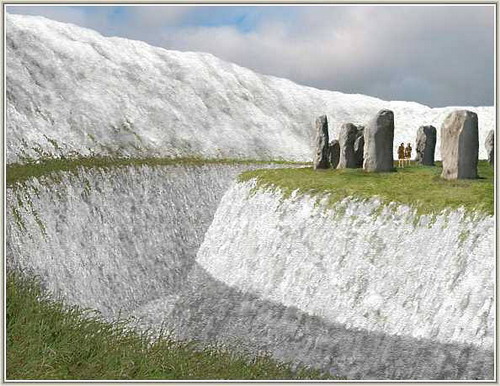BAMBU Latest Issues
BAMBU-11
See also:
BAMBU Archives: Contents
Brit-Am Megalithic Bulletin Update (BAMBU)
NEWS AND INFORMATION
Tracing The Israelite Paths of Migration
according to the Directions of the Prophet Jeremiah 31:21
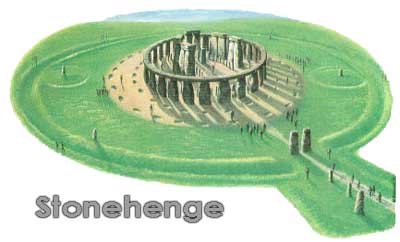
Dolmens and Megaliths
BAMBU-11
Brit-Am Megalithic Bulletin Update
1.
Megathlics
in Ireland and their astronomical alignments
2. Avebury
Notes (where did all the workmen come from?)
3. Thornborough
(Again, where did all the workmen come from?)
4. Neolithic People Not Even Living in Fixed Settlements!
(These are supposed to have supplied thousands of workers to set up the
Megaliths!)
5. New Excavations Beginning at Stonehenge
1.
Megathlics
in Ireland and their astronomical alignments
http://www.mythicalireland.com
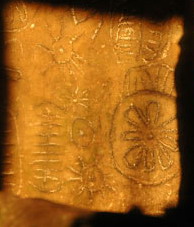
|
Extracts:
Every year, at dawn on the Spring and Autumn Equinoxes, the rising sun casts its
light into the chamber of
Cairn T [at Loughcrew on the west coast of Ireland] and illuminates solar and stellar images on the rear stone of the
chamber.
|
2.
Avebury
Notes (where did all the workmen come from?)
http://www.megalithic.co.uk/article.php?mapref=SU102699
Extracts
Avebury submitted by Tom_Bullock
Stone Circle in Wiltshire. As well as the main ~500m diameter circle there are
the remains of two inner circular features, one of which may have been a
horseshoe. Two Avenues (one now destroyed) connected to the circle.
Some statistics:
* The world's biggest stone circle
* Bank circumference: 1.5km, height: 17m area: 11.5ha
* Average stone weight: 40 tons
* Man-hours to construct: 1.5million
http://www.sacredsites.com/europe/england/avebury.html
The construction of the Avebury complex must have required enormous efforts
on the part of the local inhabitants. The sarsen stones, ranging in height from
nine to over twenty feet and weighing as much as 40 tons, were first hewn from
bedrock and then dragged or sledded a distance of nearly two miles from their
quarry site. These stones were then erected and anchored in the ground to depths
between 6 and 24 inches. The excavation of the encircling ditch required an
estimated 200,000 tons of rock to be chipped and scraped away with the crudest
of stone tools and antler picks (there is some evidence that this ditch was once
filled with water, thereby giving the inner stone rings the appearance of being
set upon an island). From excavation and soil resistivity studies it is known
that the three rings originally contained at least 154 stones of which only 36
remain standing today
3.
Thornborough
(Again, where did all the people come from? The Neolithic Era us supposed to have been one of sparse population)
http://www.timewatch.org/Pages/Thornborough1.htm
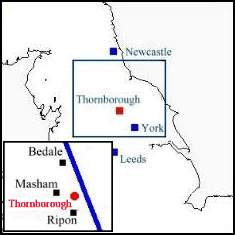
|
Thornborough is so a large site that it must have drawn people from miles
around. At a time when the population of Britain is estimated to be a couple of
hundred thousand at best, the gatherings at Thornborough may well have been the
largest seen in Britain. At its peak in c. 3,000BC Thornborough was the
equivalent of three massive cathedrals, each 240m in diameter.
....their banks were coated with gypsum to make them gleamingly white and conspicuous.
|
4. Neolithic People Not Even Living in
Fixed Settlements!
(These are supposed to have supplied thousands of workers to set up the
Megaliths!)
http://www.britarch.ac.uk/ba/ba71/feat3.shtml
The dominant interpretation of the Neolithic period in Britain over the last
decade or so has been one that suggests that the Neolithic population did not
practice fully developed, formal agriculture. Instead, the Neolithic is said to
be a period when Mesolithic people adopted some of the material symbols and the
ideas of the Neolithic without fully embracing an agricultural lifestyle. They
cultivated some plants, perhaps, but they did not 'settle' - instead operating
most of the year out of mobile camps (ba, July 1996).
5. New Excavations Beginning at
Stonehenge
The first excavation inside the ring at Stonehenge in more than four decades
gets under way on Monday.
http://news.bbc.co.uk/1/hi/sci/tech/7322134.stm
Extracts:
The two-week dig will try to establish, once and for all, some precise dating
for the creation of the monument.
It is also targeting the significance of the smaller bluestones that stand
inside the giant sarsen pillars.
Researchers believe these rocks, brought all the way from Wales, hold the secret
to the real purpose of Stonehenge as a place of healing.
The excavation at the 4,500-year-old UK landmark is being funded by the BBC. The
work will be filmed for a special Timewatch programme to be broadcast in the
autumn.
The researchers leading the project are two of the UK's leading Stonehenge
experts - Professor Tim Darvill, of the University of Bournemouth, and Professor
Geoff Wainwright, of the Society of Antiquaries.
They are convinced that the dominating feature on Salisbury Plain in Wiltshire
was akin to a "Neolithic Lourdes" - a place where people went on a pilgrimage to
get cured.
Some of the evidence supporting this theory comes from the dead, they say.
A significant proportion of the newly discovered Neolithic remains show clear
signs of skeletal trauma. Some had undergone operations to the skull, or had
walked with a limp, or had broken bones.
Modern techniques have established that many of these people had clearly
travelled huge distances to get to south-west England, suggesting they were
seeking supernatural help for their ills.
But Darvill and Wainwright have also traced the bluestones - the stones in the
centre of Stonehenge - to the exact spot they came from in the Preseli hills,
250km away in the far west of Wales.
Neolithic inscriptions found at this location indicate the ancient people there
believed the stones to be magical and for the local waters to have healing
properties.
Darvill and Wainwright hope the dig will demonstrate such beliefs also lay
behind the creation of Stonehenge, by showing that the make-up of the original
floor of the sacred circle at the monument is dominated by bluestone chippings
that were purposely placed there.
The dig will also provide a more precise dating of the Double Bluestone Circle,
the first stone circle that was erected at Stonehenge.
The original setting for this circle is no longer visible. The bluestones seen
by visitors today are later re-erections.
Archaeologists tried to date the first circle in the 1990s and estimated that it
was put up at around 2,550BC; but a more precise dating has not been possible.
Principally, this is because materials removed in earlier excavations were
poorly recorded and cannot be attributed with any certainty to specific features
and deposits.
The 3.5m by 2.5m trench that will be excavated in the new effort will aim to
retrieve fragments of the original bluestone pillars that can be properly dated.

Megalithic Monuments may serve as proof of the Migratory paths of the Israelite
Exiles.
For a Map and List of Israelite Migratory Routes see:
http://www.britam.org/Questions/QuesHistory.html#Migratory
For more maps of the Megalithic Trail of Migration see:
http://www.britam.org/Proof/Attributes/roleDolmen.html
There is much archaeological evidence some of which we have
quoted in the past.
http://www.britam.org/Questions/
QuesArchaeology.html#Stonehenge
Dolmens and the Bible
Pictures: Dolmens from Around the World
Answer to Queries on Archaeology Question no.3:
"What do Dolmens and other megalithic monuments such as Stonehenge tell us?
Dolmens by Yair Davidiy
Dolmens in Biblical Codes
Immanuel Velikovsky and the Change in Our Calendar
Join the Brit-Am Ephraimite Discussion Group
Just Send an
e-mail
with "Subscribe" in the Subject Line
and in the Message
Main Page
Your Offerings and Orders for our Publications
